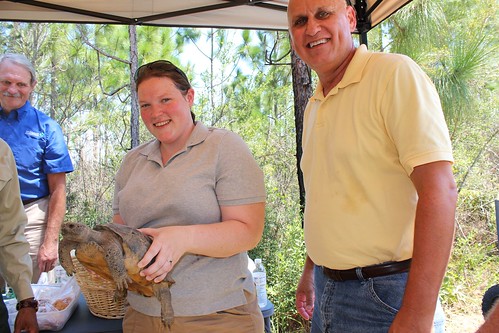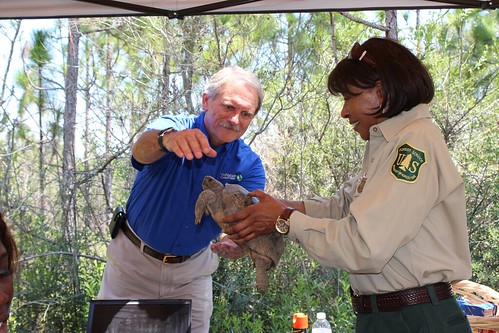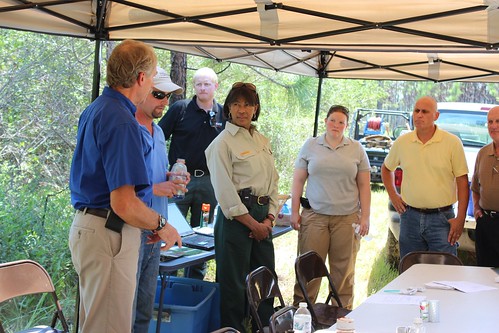
Recently I got an intimate tour of a longleaf pine forest, a rapidly vanishing Southeastern ecosystem that is home to one-of-a-kind wildlife. Longleaf pines once dominated the landscape of coastal Mississippi, but deforestation and urbanization have decreased both these forests and the unique plants and animals that call them home.
Now the USDA’s Natural Resources Conservation Service (NRCS), together with The Nature Conservancy, is working to ensure the longleaf habitat and its denizens do not disappear. Land owned by The Nature Conservancy in Jackson County, Mississippi has been set aside through an NRCS Healthy Forests Reserve Program perpetual easement, which allows the organization to help grow populations of the dusky gopher frog.
Only 250 dusky gopher frogs are believed to be in existence—mainly in two ponds in southern Mississippi. Gopher frogs only live in longleaf pine forest ponds that dry out and fill again each year, when the dusky gopher frogs lay their eggs.
I visited one of the ponds during my trip with Mississippi conservation leaders, including Al Garner, NRCS state conservationist; Gretta Boley, U.S. Forest Service state supervisor; and Jim Murrian, The Nature Conservancy state director.

Gopher frogs are not the cutest amphibians—they’re stubby with ridges and warts on their backs. The warts secrete a bitter white substance that warns off predators. And the biologists told me their croaks resemble a person snoring. Still, they’re important to the increasingly sparse longleaf pine ecosystem.
Although I only saw a photo of a dusky gopher frog, I did have the opportunity to see a gopher tortoise and black pine snake. I even got to hold them both! The gopher tortoise, named for its ability to burrow, had powerful feet, and now I understand how they can dig tunnels deep into the earth.
The frogs sometimes live in gopher tortoise burrows, reflecting the longleaf pine ecosystem’s delicate interdependence. Longleaf pines are resistant to forest fires, causing fires to burn the forest understory and leaving the trees unharmed. Fires pave the way for fresh, new growth, which wildlife can feed on. It’s neat to see how the longleaf system works together.

Just like these animals and plants rely on each other, so do NRCS and its partners have to work together to conserve and re-establish the precious longleaf ecosystem. NRCS brings to the table its Longleaf Pine Initiative, a campaign to connect landowners to NRCS programs for the purpose of restoring longleaf pine forests.
Find out more information about NRCS’ Healthy Forest Reserve Program or the Longleaf Pine Initiative
Check out more conservation stories on the USDA blog
Follow NRCS on Twitter



